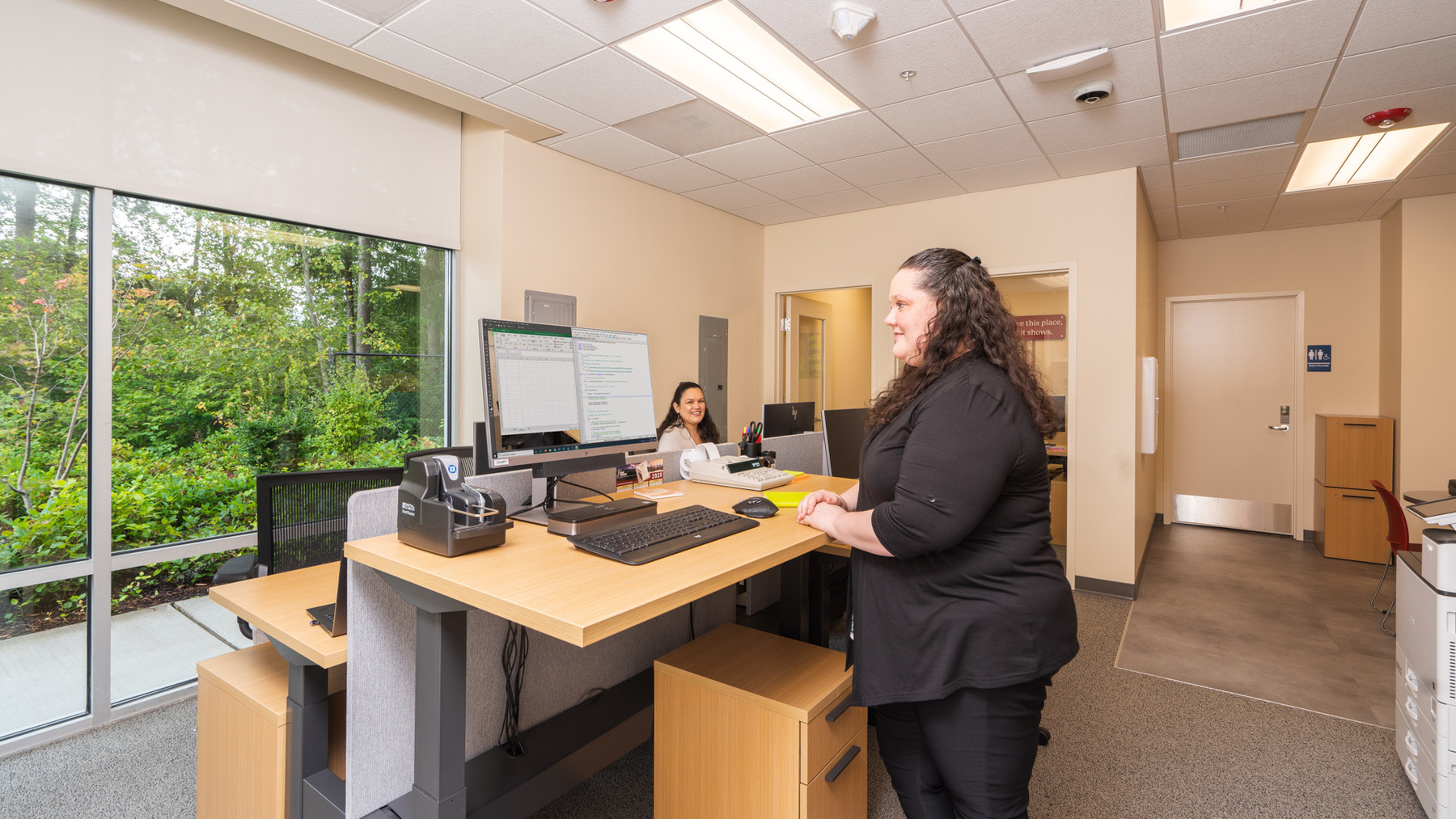This is the third of a four-part series based on insights we’ve uncovered while researching and writing our recent data-driven whitepaper “A Study of Credit Union Workplaces and the Future of Work.” We delivered a free webinar on our findings on how credit union workplaces support – or fail to support – their employees. To view the webinar and receive a copy of the whitepaper today, register via the form at the bottom of this page.
Workplace Insight: Reflecting Culture in Your Workplace
Your organization’s culture is the core of the employee experience. While many try to define it on paper, it takes real effort from leadership as well as buy-in from employees to transform your idea of culture into reality. Your physical building, as well as the way your workplace extends into remote settings, is a reflection of your culture, and the decisions you make can support or contradict your messaging. This is the way that you demonstrate your support for your employees and empower them to carry out your mission.
Cultural buy-in not only engages employees, it can also function as a powerful recruiting and engagement tool when they share it beyond the workplace. And during this pandemic especially, your culture is what ties your team together and keeps them connected in spite of physical separation.
Our recent workplace research with data from more than 1,200 credit union employees, featured in our recent whitepaper and upcoming webinar “A Study of Credit Union Workplaces and the Future of Work,” reveals a disconnect between cultural ideals and how they are reflected in the workplace.
Pride in one’s workplace is a reflection of a strong culture that is reflected in the working environment. Yet only 55% of employees are proud of their workplaces, and only 56% feel that their workplace contributes to a sense of community.
So how can you turn your organization’s cultural values into reality? The key is to clearly define these values and, with the help of your employees, understand how they are supported by the working environment.
Take the cultural value of being a flat organization. If the executives are in corner offices or don’t get facetime with remote employees, this sends a contradictory message. Or if your culture embraces collaboration, yet your workplace doesn’t have casual meeting spaces and you haven’t worked to normalize impromptu zoom meetings, this value will remain just words on paper.
From an executive or management perspective, this disconnect can be difficult to identify. This is why it is critical to involve all stakeholders in conversations around culture, and to involve them in the decision-making processes around the physical workplace design as well as remote working policies and procedures. You not only gain a diverse range of perspectives, but by giving your staff ownership over how culture is reflected in the environment you also gain their buy-in.
It turns out that your employees may reshape your culture and the way that your organization functions, and this is a good thing. Employee driven culture leads to stronger engagement and can turn your workforce into advocates and recruiters.
To learn more about reflecting your culture in the workplace, as well as three other major impact areas we’ve uncovered in our research, read our workplace whitepaper and watch the webinar by filling out the form below.
Webinar Request

